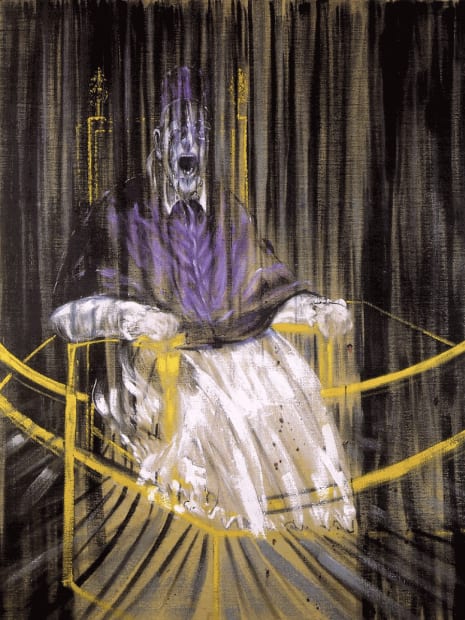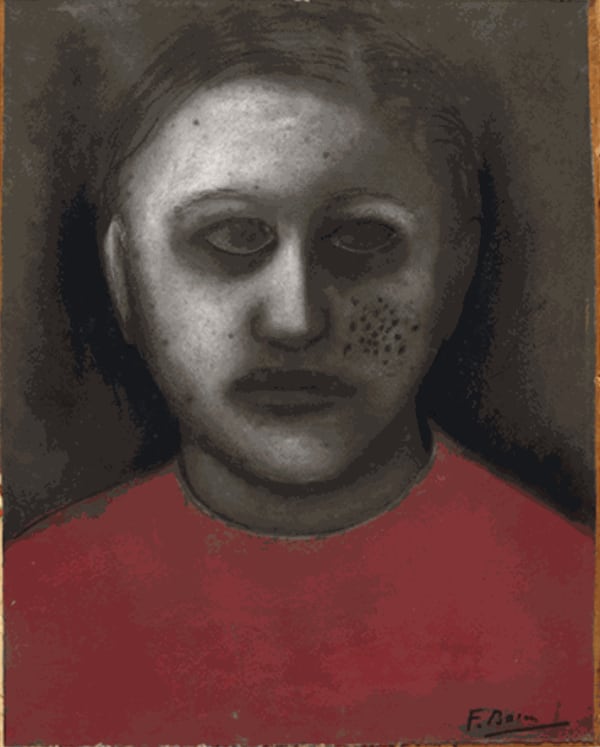-

Study after Velázquez's Portrait of Pope Innocent X, 1953
Oil on canvas
153cm x 118cm
-
"I want to paint like Velázquez but with the texture of a hippopotamus skin"
- Francis Bacon
Bacon's work from the 1940s began using relatively vivid colours, and through the decade became darker and more texture-driven. Taking influence from antiquity and old masters artists, including the Greek Furies and portraiture akin to Velazquez and Caravaggio, he created a range of works encompassing surreal figures and abstract scenes. Of the works from this period, 'Three Studies for Figures at the Base of a Crucifixion, 1944' and 'Figure in a Landscape, 1945' are noted as standout works, both showcasing Bacon's experimentation with figurative form and muddied scenes. -

Painting, 1946
Oil and pastel on linen
197.8cm x 132.1cm
-

Portrait of George Dyer in a Mirror, 1968
Oil on canvas
78in x 58in
-















